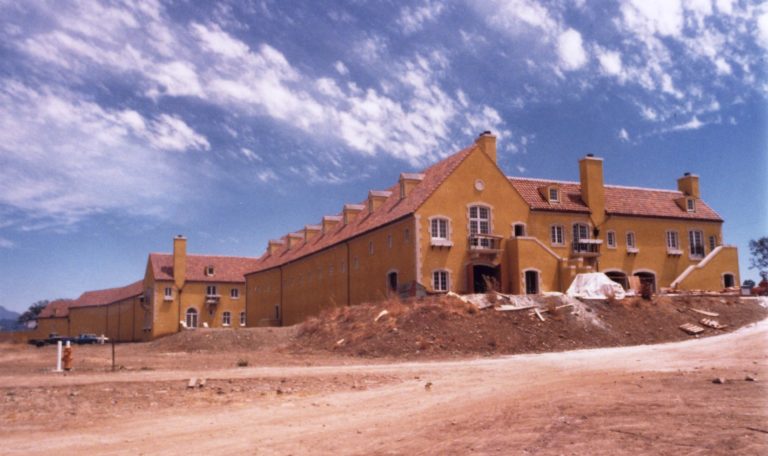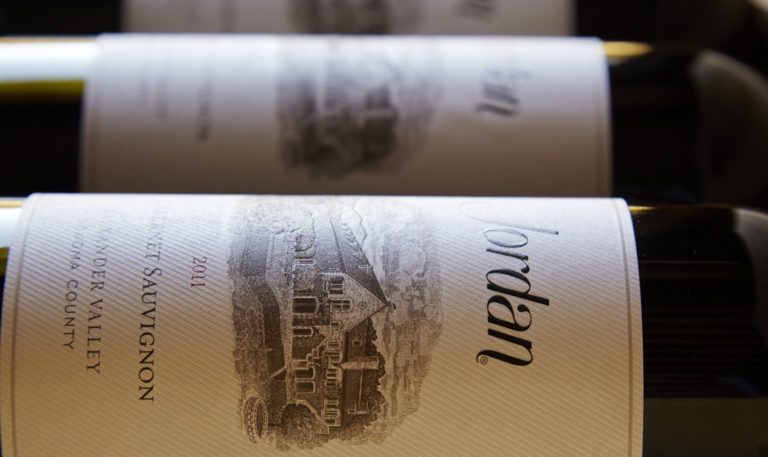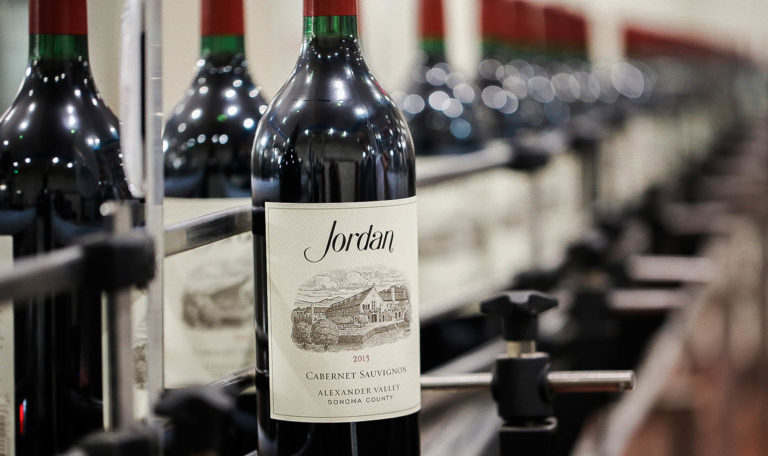What information should and should not be printed on a wine back label continues to fuel heated debates amongst wine bloggers, retailers and critics alike. Now that conjunctive labeling has become law for all Sonoma County wineries (effective January 1, 2011), we’re using this opportunity to reevaluate our approach to the wine label contents on both Jordan Chardonnay and Cabernet Sauvignon. (Read our final wine label redesign blog to see the final package.)
Before we embarked on this project, we asked Sally Jordan to share the story of how the Jordan wine label design came to life in the mid-1970s. As someone who has worked at Jordan for just one year, I find it fascinating how much effort went into the creation of the Jordan chateau drawing, finding an expert lithographer (who was not incarcerated!) and selecting a steel engraving printer specializing in intaglio techniques. Few people know that our labels are printed in a two-part process (lithography for the letters and intaglio for the chateau) by American Bank Note—the same company that prints government tax return checks and drivers licenses. Harlan Estate and Jordan are reportedly the only wine labels ABN prints each year.
Deciding what to change on our front label was easy: nothing. We’re simply adding the required region — “Sonoma County” — beneath the sub-appellations Russian River Valley for Chardonnay and Alexander Valley for Cabernet Sauvignon.
Developing a new back label, however, has been a struggle. The original vision of the Jordan label was to emulate the design elegance of a particular first-growth chateau in Bordeaux. First growths do not include colorful stories or descriptions on their back labels. The name is supposed to speak for itself. For many years, that has been the philosophy at Jordan. On the back label, you’ll find the name of the wine, a UPC code and government requirements. As they say in France, “C’est tout.”
Much has changed at Jordan since John Jordan took over from his father in 2005. Should our wine labels be any different? We’ve read online commentary about back label copy etiquette. We’ve queried customers, sales representatives and friends. Everyone seems to agree that our back label should include a message from John, which would describe our winemaking style and what the wine generally tastes like. Several colleagues recommended including percentages of grapes our Cabernet Sauvignon’s blend, as well as oak aging regime. I’ve learned including such details isn’t possible because our intricate labels are printed 2-3 months before our winemakers decide on the final blend. Rob and his team are constantly fine-tuning our final blends up until the week before wine bottling. Pursuing ever-higher greatness in winemaking requires flexibility, not formulas.




